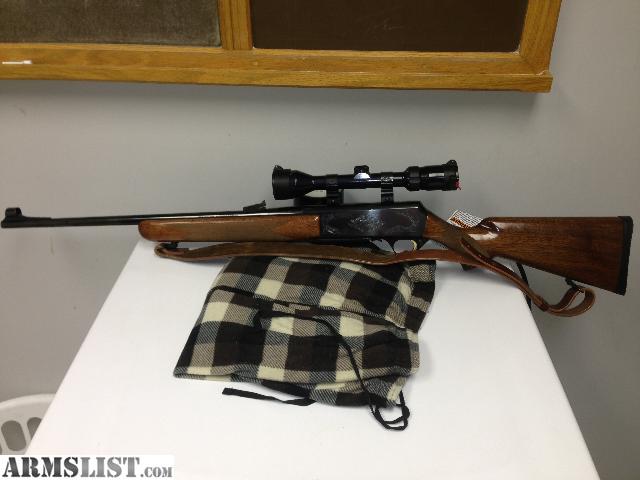
Posted on 09/11/2015 6:59:42 AM PDT by C19fan
World War I is often called “the machine gun war” because of the devastating use of automatic weapons such as the Maxim gun. It’s also when some of the drastic developments in machine gun technology occurred.
Artillery fire actually killed more men than machine guns, but statistics simply don’t convey the horror of European armies on the Western Front facing automatic fire. For example, during just one day in 1916 at the Battle of the Somme the British lost 21,000 men – many of them killed by Spandau machine guns, the German version of the Maxim.
(Excerpt) Read more at warisboring.com ...
Barrow used the A5 with a shortened barrel.
Incompetent and arrogant military leadership is the *real* killing machine.
The problem began with Napoleon, who while not particularly brilliant as a military planner himself, had at least two senior generals who were military geniuses. How their strategy worked is best, and fairly simply illustrated by the Ulm-Austerlitz campaign.
To start with, Napoleon had two unusually large armies. He sent one of them to Italy, to protect his southern flank. So with just his single, grand army, he went into battle expecting to fight SEVEN Austrian and Russian armies.
He was helped immeasurably by a fluke. The European armies used the Gregorian calendar, but the Russians still used the Julian calendar, which was about two weeks behind the Gregorian in its dates. So they left Russia two weeks late.
To make matters worse, they had to pass through Prussia, and the Prussians were not happy at all to see four Russian armies pass through their country. So more severe delays.
In any event, on to strategy. Napoleon decided to confuse his enemy as to where he was going, and what he was going to attack. So he put his army in a north-south line almost the width of Europe. As the line marched East, units formed and reformed so the enemy could not tell who was where, while gradually reducing the length of the line while thickening it. Eventually it split sideways, so that there was a front line, and a rapidly moving rear echelon.
The concept (called the “Axe” technique) was that the front would engage the enemy on a wide front, and the rapidly moving second echelon would go up and down the line, looking for a weakness in the enemies defenses, then pour through, splitting the enemies forces.
It worked exceedingly well for the times.
In any event, the Austrians figured that the French would have to do a major river crossing, and that the best place to do that was at the German city of Ulm, which was inside an L shaped bend in the river. So they put the best of their three armies in the city.
With considerable razzle-dazzle, Napoleon’s army carried out a major river crossing with their engineers *North* of the city. Then very quickly surrounded the city with their fast moving second echelon.
Pinned in on two sides by the river, and encircled on the land, that entire army had to surrender or be slaughtered. And surrender they did.
This was the preface to the battle of Austerlitz, which is regarded as one of the most important battles of maneuver in history, and was extensively studied by all modern armies. The French won an incredible victory, defeating two Austrian armies and a Russian Army, with the other three Russian armies returning home in a hurry.
Now all of this explains World War I, and easily.
Every modern army of the time adopted these Napoleonic tactics as the only way to fight a war. And the zinger is, that *they do not work*, if both sides are using them.
If both sides are doing so, you end up with a horrific bloodbath and stalemate. And victory goes to whoever abandons the Napoleonic tactics first.
The utter carnage of World War I forced all the western European nations to make a huge review and revision of their tactics, but because of the Russian revolution, the Russians *never did*.
So up until the collapse of the Soviet Union, they were still embracing Napoleonic tactics. Modern technology was adapted to those tactics. Even having nuclear weapons didn’t change those tactics.
And NATO knew it. So planned its defenses using tactics formulated to *defeat* Napoleonic tactics.
But in the final analysis, it does not boil down to technology, but pragmatic leadership.
And the legendary Browning M2 (Ma Deuce) .50 cal MG was and still is the deadliest MG around with probably more kills and damage inflicted than a lot of military arms. Browning did know what was needed in the field.
Probably the reason Faye Dunaway hung out with him...
I remember shooting the BAR off our Fletcher-class DD in 1966. We'd run about 200 rounds through the old warhorse. The barrel was really cooking. when I handed it off to a new shooter. He made the mistake of grabbing it around the exposed barrel, and got an immediate blister 2/3 the width of his hand. The next time I saw him, his whole hand was swathed in bandages. That was a very painful lesson for him and all the shooters were very aware what NOT to touch!
I have one of the 1918A3’s from Ohio Ordnance with the walnut stock. Beautiful weapon. Definitely turns some heads at the shooting range
Fascinating. Learn something new every day around here.

Looks like more than three:

You would think that after seeing men being killed the first time by the thousands as they ran directly into the machine gun fire that the generals would think to use different tactics.

Except Churchill is unfairly blamed. True, he was the big proponent of Gallipoli. But his version was meant to be a naval attack on Istanbul which probably would have succeeded if Churchill had total control over the operations. Which he didn't.
I'm reading William Manchester's three volume bio of Churchill. Manchester, a WWII Marine, wrote that Churchill's original plan probably would have worked. Istanbul was weakly defended. A direct assault on the capital would have forced the Turks to skedaddle and might have knocked them out of the war.
A preliminary assault up the peninsula had succeeded well. But because of army objections and the assault force lost a few ships people above Churchill shelved the naval assault. The army brass settled on trying the army landings but took their time. The peninsula was weakly defended when the operation began. But by the time the brass decided to land troops the peninsula had been reinforced. Hence the debacle from which Churchill has always taken all the blame.
In reality, Churchill was the only original thinker in the British armed forces and also realized the future of tanks. He saw the stalemate in the trenches and thought of a way to change things.
If Churchill had been given his head in Gallipoli, the Turks very probably would have been knocked out of the war, and the Allies added more countries to fight with them against an isolated Germany.
You must be really young or you just missed the opportunity to be equipped with one of these puppies.
Your 5-shot semiauto's a fearsome weapon but way too delicate and short-winded for the kind of the work the real BAR does.
Why do You rob banks?
That’s were the Money is!
On a recent thread someone wrote that the BAR sucked, largely because it was heavy and the mags only held 20 rnds. It stuck out because most people only have positive things to say about it.
Disclaimer: Opinions posted on Free Republic are those of the individual posters and do not necessarily represent the opinion of Free Republic or its management. All materials posted herein are protected by copyright law and the exemption for fair use of copyrighted works.